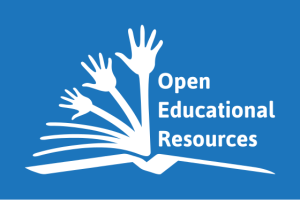The Next Steps
41 Open or closed?
Open Educational Resources (OER) and their history
Educational resources refer to any material, nowadays increasingly digital, which will play a part in education: textbooks, presentation slides, curricula and exams. They will be open when they can be freely shared with others (a more exact definition will be given in a moment).
Even if education has been open in many aspects in the past, the actual terms were better understood. The following definitions of OER and open licence were revised in connection with the recommendation on November 25, 20193:
- Open educational resources (OER) are learning, teaching and research materials, in any format or medium, that reside in the public domain or are under copyright that has been released under an open licence and that permit no-cost access, reuse, re-purpose, adaptation, and redistribution by others.
- An open licence is one that respects the intellectual property rights of the copyright owner and provides permissions granting the public the right to access, reuse, re-purpose, adapt, and redistribute educational materials

The terms open content and OER refer to any copyrightable work (traditionally excluding software, which is described by other terms such as open source) that is licenced to grant the following rights (also known as the five Rs)1,2:
- to Retain – the right to make, possess, and control copies of the content (eg, download, reproduce, store, and manage);
- to Reuse – the right to use the content in a variety of ways (eg, in class, in a study group, on a website, in a video);
- to Revise – the right to adapt, adjust, modify, or alter the content itself (eg, translate the content into another language);
- toRemix – the right to combine the original or revised content with other material to create something new (eg, to embed the content);
- to Redistribute – the right to distribute copies of the original content, revisions, or their combination to others.
These rights are not trivial. For example, the third right (to revise) is essential for teachers. It allows them to take someone’s learning material and adapt it to their own purpose, to the duration and level of their classroom and perhaps to geographic and cultural specificities.
Why AI wants open data
On the other hand, as demonstrated in different parts of this book, and also by the financial investments of the industry, education can be seen as a market. As machine learning is the principal force driving artificial intelligence, it is fair to deduce that for AI to thrive, AI for education will need data.
The difference between user data and knowledge data
There are two types of data necessary for AI education.
There is data about the users, such as asking, how do they learn? What triggers good learning? What allows them to learn better? As Daphne Koller once put it: “Let’s make education science into a data science!” This data can only be produced by the users themselves. It is therefore essential for companies to own platforms with which users will be asked to interact. This has been the key to success of many AI companies and will be the key for success in education.
The second type of data concerns knowledge. In education, courseware represents a large chunk of this knowledge. This data is or isn’t shared. In most cases, knowledge creators or collectors may know little about licences, and the material they have produced will be hidden in university repositories, on strange blogs, or shared inside specific groups on social networks. Some of this knowledge is of course behind paywalls and some is on sites whose business model involves offering the knowledge for free, but in a setting in which one has to view adverts and unwanted publicity to get or maintain access.
User data has to be protected
In the first case the data (the user data) has to be protected. More so if this data belongs to under-age pupils. This means the school or teacher must not share this data with platforms unless explicitly allowed to do so, even if the platform does offer some interesting service. Similarly, it is never a good idea to register the names and addresses of one’s pupils in order to participate in an activity.
The European Union has provided a robust framework to protect its citizens privacy and digital rights. This is called GDPR (General Data Protection Regulation). It gives citizens rights that must be granted by the platforms, whether they are for education or not.
Knowledge data should be shared
Knowledge can and should be shared, when one has the right to do so.
This means understanding how licencing works. Creative commons licences are usually those that work best for OER. Once OER are shared, artificial intelligence can be used by many entities and projects, such as the project X5-GON (a convergence of freely available technological elements).
1 Wiley, D., & Hilton, J. (2018). Defining OER-enabled pedagogy. International Review of Research in Open and Distance Learning, 19(4).
2 Wiley, D (2014).The Access Compromise and the 5th R.
3 UNESCO. (2019). Recommendation on open educational resources (OER).
